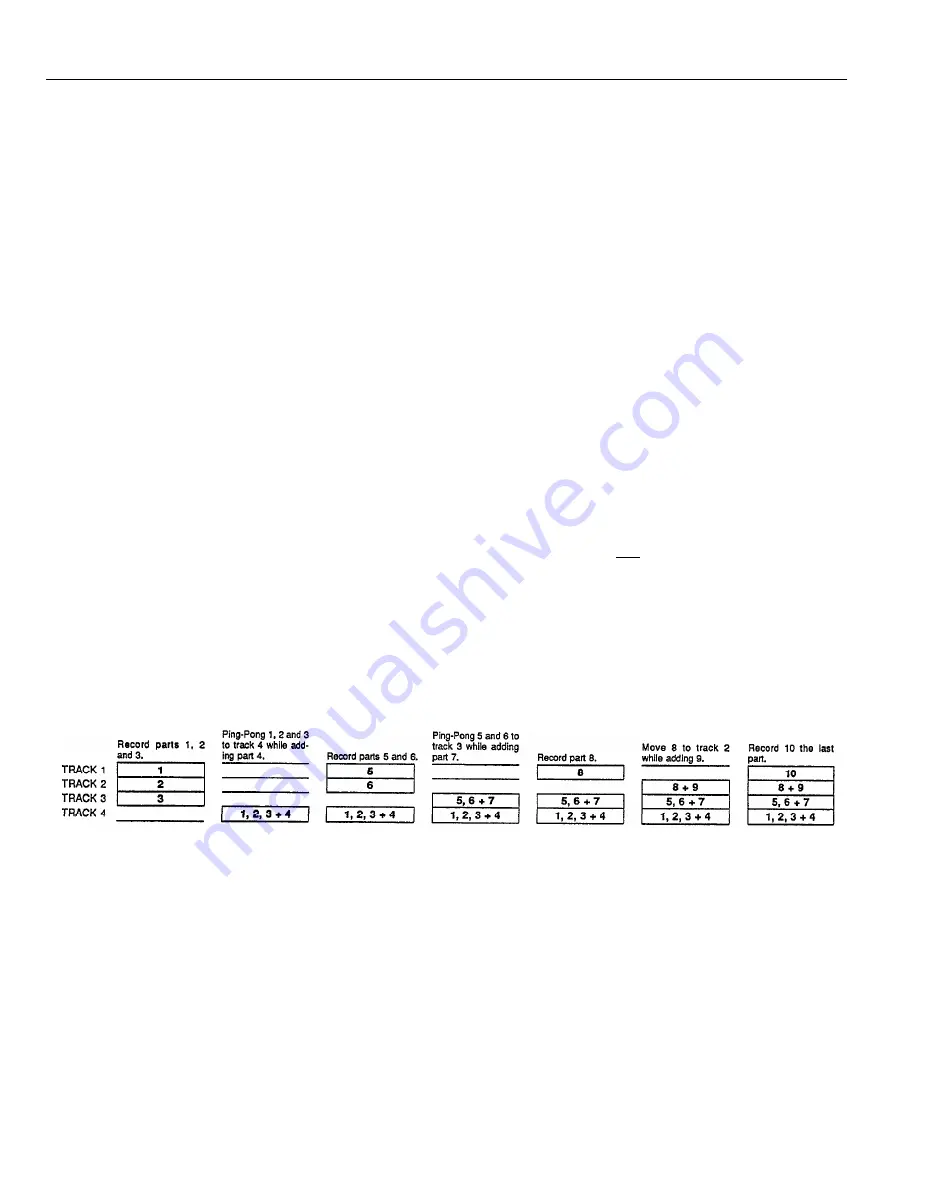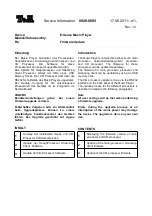
PING-PONG RECORDING
Ping-pong recording is a technique you can use to squeeze more than just 4 parts onto your 4-track machine.
This is accomplished by re-recording a mix of existing tracks onto an open track. Once tracks have been combined in this
way on a new track, the original tracks can be erased, clearing them for additional overdubs,
In ping-pong recording, you can record parts on tracks 1,
2, and 3, for example, and then re-record these tracks
onto track 4, using the mixer controls to set up the right
balance between the 3 original tracks. You now have a
“mix” of the first 3 tracks on track 4, and tracks 1, 2, and 3
are available for more recording. That’s already the equivalent
of 6 “tracks” on your 4-track recorder. While mixing the
first 3 tracks down onto track 4 you can also mix in a live
instrument via the MT120 mixer section. That would give
you 4 parts recorded on track 4 of the tape. With the 3
tracks you still have available for recording, that’s a total
of 7 tracks. Now, if you record only 2 of the remaining
tracks and ping-pong these to track 3 while mixing in
another live instrument, you’ll have 4 parts on tracks 4, 3
parts on track 3, and 2 tracks available. That’s a total of 9.
Following this procedure it is actually possible to record
up to 10 individual tracks without re-recording any single
track more than once (refer to the illustration).
[Note]
Ping-ponging is a critical step because the tracks
to be ping-ponged must be mixed
perfectly
before
you can go on to recording the subsequent tracks.
This is because once they’re ping-ponged and
new material has been recorded on the original
tracks, their balance and individual sound
cannot
be changed unless you go back and record the
original tracks all over again.
[Note]
It is recommended that you record using the 9.5
cm/sec tape speed with dbx ON if you plan to
combine tracks using the ping-pong technique.
Under some conditions, use of the 4.8 cm/sec
tape speed with noise reduction OFF will cause
feedback when a previously recorded track is re-
recorded onto an adjacent track.
[Note]
Ping-Pong recording technique requires that multiple
tracks are directed to tape via PAN controls. Re-
member that a signal appearing at the stereo AUX
RETURN will also be added along with the tracks
being recorded or ping-ponged. To prevent an
effect from being recorded, set the AUX RETURN
fader to “0” (all the way off).
EXAMPLE: Recording tracks “1” through “10” using the Ping-pong process.
17
Содержание MT120
Страница 1: ...YAMAHA AUTHORIZED PRODUCT MANUAL MULTITRACK CASSETTE RECORDER ...
Страница 2: ...YAMAHA MULTITRACK CASSETTE RECORDER OPERATION MANUAL ...
Страница 7: ...THE CONTROLS AND CONNECTORS CONTROL PANEL FRONT PANEL REAR PANEL 4 MT120 MULTlTRACK CASSETTE RECORDER ...
Страница 29: ...BLOCK DIAGRAM ...
Страница 30: ......
Страница 32: ...YAMAHA 9202 R4 Printed in Japan ...














































